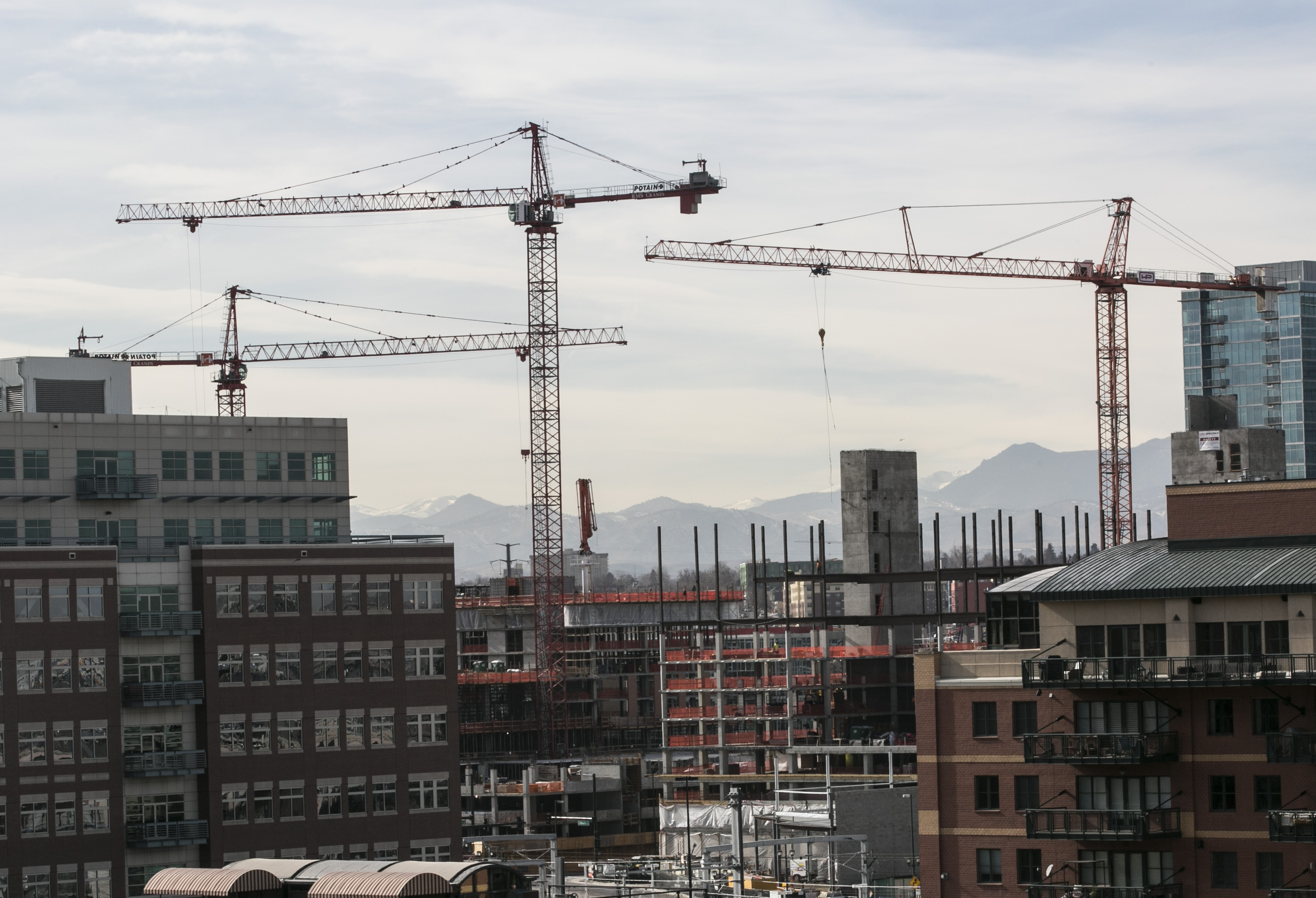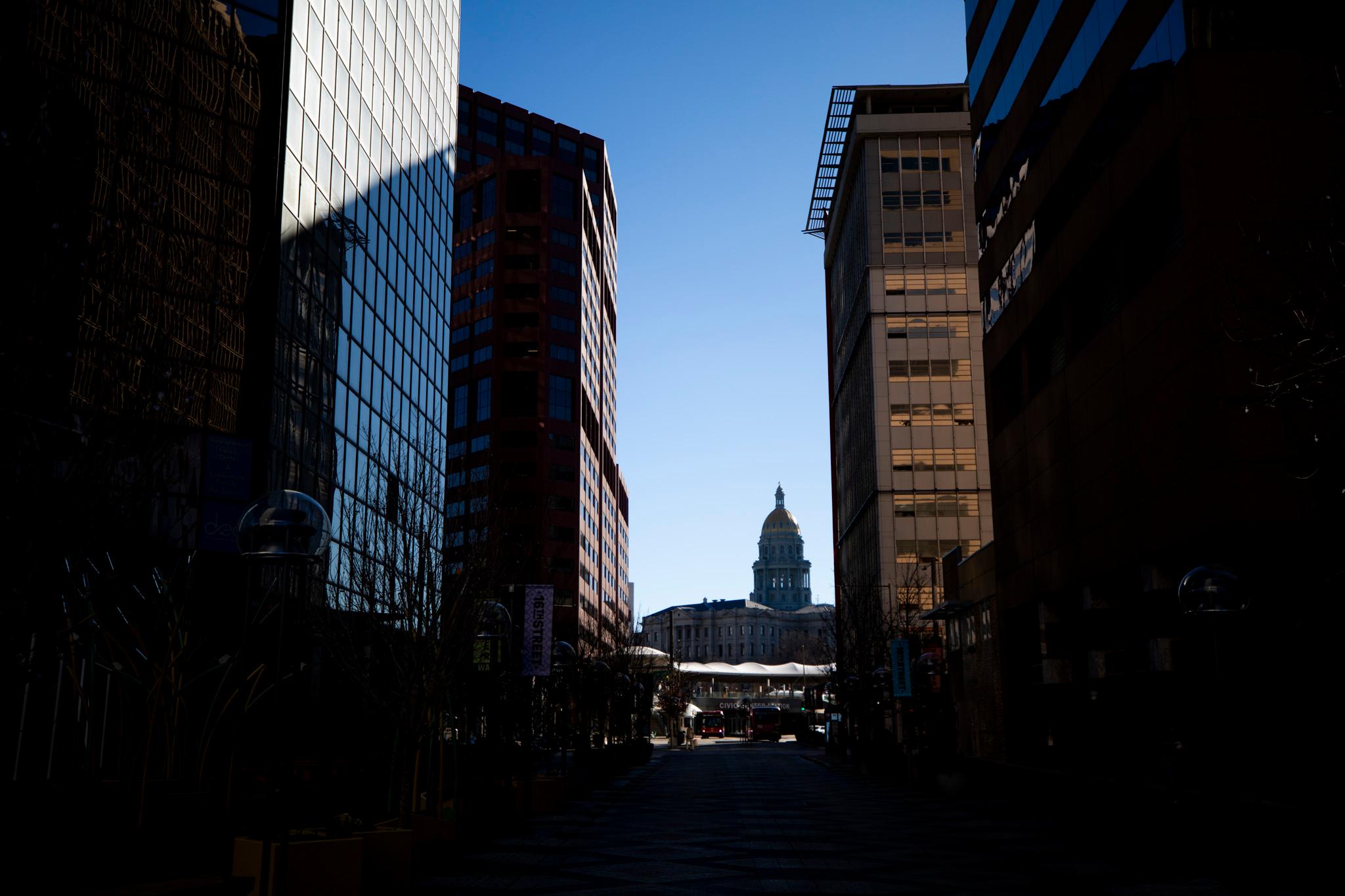
All over Denver, there is noise along with closed sidewalks and roads as the city experiences record growth. And the cranes, they seem to be everywhere.
Some may find all the change stressful, but Ken Schroeppel, an assistant professor in the College of Architecture and Planning at CU Denver, says he draws energy from it. “When I’m walking around the city, and see construction and all sorts of things going on, to me that’s stimulating.”
He’s pleased to see the endless surface parking lots around Denver filling with buildings, much of it to house the city’s surging population.
“We have to put these people somewhere, and we cannot build a wall on our borders of Colorado or Denver and keep people out.”
The Mile High City has the second-fastest-growing population in the country since 2010, according to the U.S. Census Bureau. Austin, Texas claims the top spot. While there’s some evidence that Denver’s growth is slowing, about 1,000 people a month are still moving here.
“What you’re seeing, when you see all these buildings going up, is the data’s pointing to the need for new buildings,” says Jay Depard a senior managing director at Hines, which is building a 40 story glass and steel “trophy office tower” downtown.
In 2016, the Denver area saw a record $7.8 billion in construction projects, a 23 percent increase over 2015’s previous record, according to Dodge Data and Analytics.
“It’s office, residential, retail, industrial,” Depard says. “There isn’t one sort of food group in any sort of real estate capacity that isn’t clicking on all cylinders right now.”
Of all those “food groups,” apartment buildings continue to lead the pack. Residential projects made up 60 percent of 2016’s construction starts. There are a staggering 25,382, mostly rental, apartment units under construction in the Denver area right now, and 26,884 more in the planning phase.
For Matt Vance, an economist with commercial real estate firm CBRE, those are eye opening numbers. He says Denver’s fundamentals — population growth and job creation — are getting noticed by global investors.
“Bahrain, for instance, and Sweden, are some new faces we’re starting to see invest here in addition to China, South Korea and Canada.”
International money used to flow mainly to cities like Miami and New York, but Vance says those are more expensive markets to break into. Denver looks all the more attractive with consensus forecasts showing the city will continue to outperform the national average.
“Things look good,” Vance says. “At least there’s no reason to believe that we should expect for the worst.”
You can take that to mean that there aren’t any glaring red flags, but the current economic expansion is about eight years old now. Some experts, like Richard Branch, an economist with Dodge Data and Analytics, say the cyclical nature of the economy has to kick in at some point. In baseball terms, Branch says we’re getting into the “sixth or seventh-inning on the construction cycle.”
“At some point over the next two years, by 2018, we expect that market to start shifting into the downside of the cycle.”
So, are we entering the seventh-inning stretch with the home team up and a smile on our face — or are the clouds gathering as we forlornly sing “Take Me Out To The Ball Game”? Though Branch incorrectly predicted that Denver construction would fall in 2016, he jokes that in economics you’re either wrong or lucky.
Still, anticipating a downturn is important business. Developer Jay Despard says no one wants to deliver their building in the middle of a recession. Denver has a strong, diverse economy, but if he could predict recessions he’d be a rich man.
“I wouldn’t be standing here, I’d be standing on a beach somewhere.”









